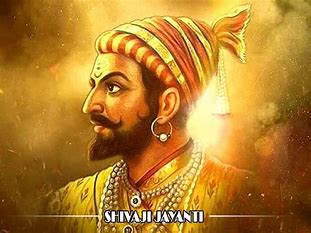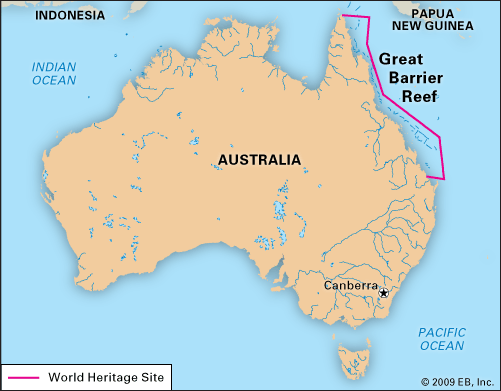CONTENTS
- Personality rights
- Chhatrapati Shivaji
- Great Barrier Reef
Personality Rights
Context:
The Delhi High Court recently passed an interim order to prevent the unlawful use of Bollywood star Amitabh Bachchan’s name, image and voice. The court, through its order, restrained persons at large from infringing the personality rights of the actor.
Relevance:
GS II: Polity and Governance
Dimensions of the Article:
- What are personality rights?
- Are personality rights different from publicity rights?
- Does the use of a name on the internet affect personality rights?
What are personality rights?
- Personality rights refer to the right of a person to protect his/her personality under the right to privacy or property.
- These rights are important to celebrities as their names, photographs or even voices can easily be misused in various advertisements by different companies to boost their sales.
- Therefore, it is necessary for renowned personalities/celebrities to register their names to save their personality rights.
- A large list of unique personal attributes contribute to the making of a celebrity.
- All of these attributes need to be protected, such as name, nickname, stage name, picture, likeness, image and any identifiable personal property, such as a distinctive race car.
Are personality rights different from publicity rights?
- Personality rights are different from publicity rights.
- Personality rights consist of two types of rights —
- The right of publicity, or the right to keep one’s image and likeness from being commercially exploited without permission or contractual compensation, which is similar (but not identical) to the use of a trademark;
- The right to privacy or the right to not have one’s personality represented publicly without permission.
Publicity rights
- However, under common law jurisdictions, publicity rights fall into the realm of the ‘tort of passing off’.
- Passing off takes place when someone intentionally or unintentionally passes off their goods or services as those belonging to another party.
- Often, this type of misrepresentation damages the goodwill of a person or business, resulting in financial or reputational damage.
- Publicity rights are governed by statutes like the Trade marks Act 1999 and the Copyright Act 1957.
Does the use of a name on the internet affect personality rights?
- The Delhi High Court in 2011 made an observation in the case of Arun Jaitley vs Network Solutions Private Limited and Ors., in which Mr.Jaitley filed a suit seeking permanent injunction against the defendants from misuse and immediate transfer of the domain name www.arunjaitley.com.
- The Court stated that “the popularity or fame of individual will be no different on the internet than in reality.”
- The Court decided in the favour of Mr. Arun Jaitley, stating that the “name also falls in the category wherein it besides being a personal name has attained distinctive indicia of its own. Therefore, the said name due its peculiar nature/distinctive character coupled with the gained popularity in several fields whether being in politics, or in advocacy,has become a well-known personal name/mark under the trade mark law which enures him the benefit to refrain others from using this name unjustifiably in addition to his personal right to sue them for the misuse of his name.”
-Source: The Hindu
Chhatrapati Shivaji
Context:
As yet another row over Chhatrapati Shivaji Maharaj erupts among politicians, a look back at one of the most famous stories surrounding the Maratha icon
Relevance:
GS I- History
Dimensions of the Article:
- About Chhatrapati Shivaji
- Shivaji and the Mughals
About Chhatrapati Shivaji

- Born on February 19, 1630, at Shivneri Fort in Pune.
- He was born to Shahaji Bhonsle, a Maratha general who ruled the Bijapur Sultanate’s jagirs of Pune and Supe. Shivaji’s mother was Jijabai, a devout woman who had a strong religious influence on him.
- Shivaji’s name was derived from the name of a provincial deity, Goddess Shivai.
- He created the Maratha Empire by carving out an enclave from the crumbling Adilshahi sultanate of Bijapur.
- He was formally crowned Chhatrapati (Monarch) of his dominion in Raigad in 1674.
- Religious tolerance and functional integration of the Brahmans, Marathas, and Prabhus ensured the kingdom’s security.
- With the support of a disciplined military and well-structured administrative organisations, he constructed a competent and progressive civil rule.
- He had a ministerial council (Asht Pradhan) to advise him on state problems, but he was not bound by it. He had the authority to appoint or fire them.
- He pioneered non-conventional methods (guerrilla warfare) and used strategic elements such as terrain, speed, and surprise to innovate military tactics.
- To defeat his larger and more powerful opponents, he concentrated on pinpoint attacks.
- Although the courageous warrior died in 1680, he is remembered for his bravery and intelligence.
Shivaji and the Mughals
- Shivaji’s meteoric rise posed challenges to the suzerainty of the Mughals.
- His first direct encounter with the Mughals was during Aurangzeb’s Deccan campaigns of the 1650s.
- As Aurangzeb went North to fight for the Mughal throne, Shivaji was able to seize further territory.
- His tactics against the Mughals were adapted to the specific nature of his force and the flabby Mughal armies. Using swift cavalry attacks, he would raid and pillage Mughal strongholds.
- While on the rare occasion he would engage in battle to actually capture and hold Mughal positions, most often, he would simply cause much menace, raid the treasury, and leave with the Mughals in terror and disarray.
- Famously, in 1664, he attacked the port of Surat (now in Gujarat) and plundered one of the richest and busiest commercial towns of Mughal India while the local governor hid in a nearby fort.
- As the legend of Shivaji and the physical sphere of his influence grew, Aurangzeb sent a 100,000-strong, well-equipped army under Raja Jai Singh I to subdue him in 1665.
- After putting up a valiant fight, Shivaji was besieged in the Purandar hill fort.
-Source: Indian Express
Great Barrier Reef
Context:
Recently, a joint report by the International Union for Conservation of Nature (IUCN) and UNESCO’s World Heritage Centre (WHC) expressed concern about the status of the Great Barrier Reef (GBR) in Australia, recommending that it “be inscribed on the List of World Heritage in Danger.”
Relevance:
Environment and Ecology (Conservation of Environment and Ecology, Environmental Pollution and Degradation)
Dimensions of the Article:
- Great Barrier Reef
- About Coral Reefs
- What does the new report say?
Great Barrier Reef
- The Great Barrier Reef, located in the Coral Sea (North-East Coast), off the coast of Queensland, Australia, is the world’s most extensive and spectacular coral reef ecosystem composed of over 2,900 individual reefs and 900 islands.
- This reef structure is composed of and built by billions of tiny organisms, known as coral polyps which are tiny, soft-bodied organisms and their base which is a hard, protective limestone skeleton called a calicle, forms the structure of coral reefs.
- It was selected as a World Heritage Site in 1981.

About Coral Reefs
- Indonesia has the largest coral reef area in the world and the Great Barrier Reef of the Queensland coast of Australia is the largest aggregation of coral reefs.
- India, Maldives, Sri Lanka and Chagos have the maximum coral reefs in South Asia.
- Coral Reefs protect humanity from natural calamities acting as a barrier, provide revenue and employment through tourism and recreation and also provide habitats for fishes, starfish and sea anemones.
- Coral blocks are used for buildings and road construction, the lime supplied by corals is used in cement industries and coral reefs may also be used in jewellery.
- India has four coral reef areas:
- Gulf of Mannar,
- Andaman and Nicobar Islands,
- Lakshadweep islands
- Gulf of Kutch.
Risks and threats to coral reefs
- Due to anthropogenic activities such as coastal development, destructive fishing methods and pollution from domestic and industrial sewage.
- Due to increased sedimentation, over-exploitation and recurring cyclones.
- Coral diseases such as black band and white band due to infectious microorganisms introduced by the human population that live on the coastal regions.
What does the IUCN-WHC report say?
- The report paints a rather bleak picture of the GBR’s current state.
- Despite Australia’s sustained and scientific efforts to manage the property, currently, the GBR is adversely and significantly impacted by climate change factors, affecting its resilience to sustain and regenerate itself.
- Frequent bleaching events have made many reefs sterile. Degraded water quality poses a particular threat.
- The report says that currently, the management of the property lacks clear climate change goals.
- Further, the implementation of existing plans to conserve the GBR has been falling short, specifically in relation to the management of water quality and fishing activities.
- Inshore land-based activities, often outside the protected area, are particularly responsible for the degraded water quality in GBR.
- Pollutants from agricultural and construction activities have been damaging and other proposed developments around the Queensland coast are matters of concern.
Report has multiple suggestions:
- The foremost is adding the GBR to the List of World Heritage in Danger.
- Among other things, recommendations also include monitoring and evolving farming practices, greater commitments to reduce greenhouse gas emissions, addressing land erosion on the coast, and adopting sustainable fishing practices.
What does putting GBR on the List of World Heritage in Danger entail?
- According to UNESCO, “the List of World Heritage in Danger is designed to inform the international community of conditions which threaten the very characteristics for which a property was inscribed on the World Heritage List, and to encourage corrective action.”
- Under the 1972 World Heritage Convention, inscribing a site on the List allows the WHC to allocate immediate assistance from the World Heritage Fund to the endangered property, while simultaneously gathering international support and attention to the site.
- While some countries do welcome the extra support that accompanies inscription into this list, many have often protested and made attempts to avoid this from happening, seeing it as a great embarrassment for the country.
- Furthermore, while it is difficult for UNESCO to enforce any of its recommendations, being put on the list does invite greater scrutiny for the site.
- This is especially true when talking about ecological heritage sites– often, the interests of conservation and economic development are opposed.
- Inclusion in such a list can have a tangible impact on all kinds of developmental projects, which may be politically significant for governments.
-Source: Indian Express




